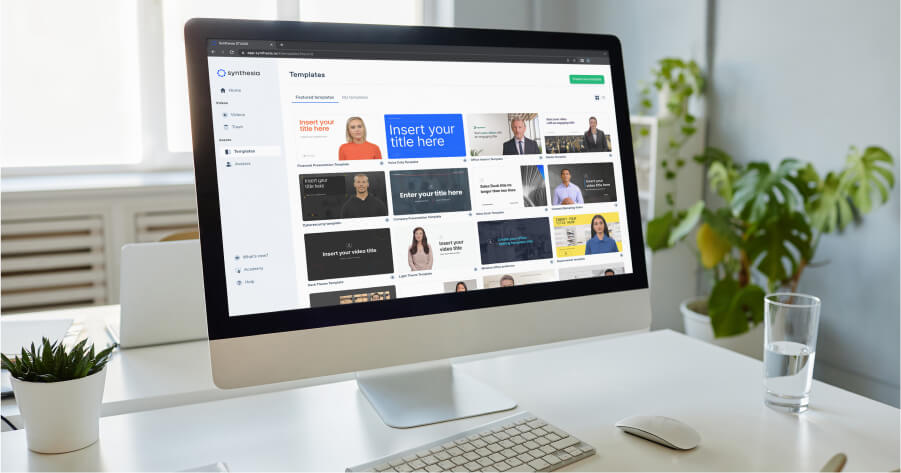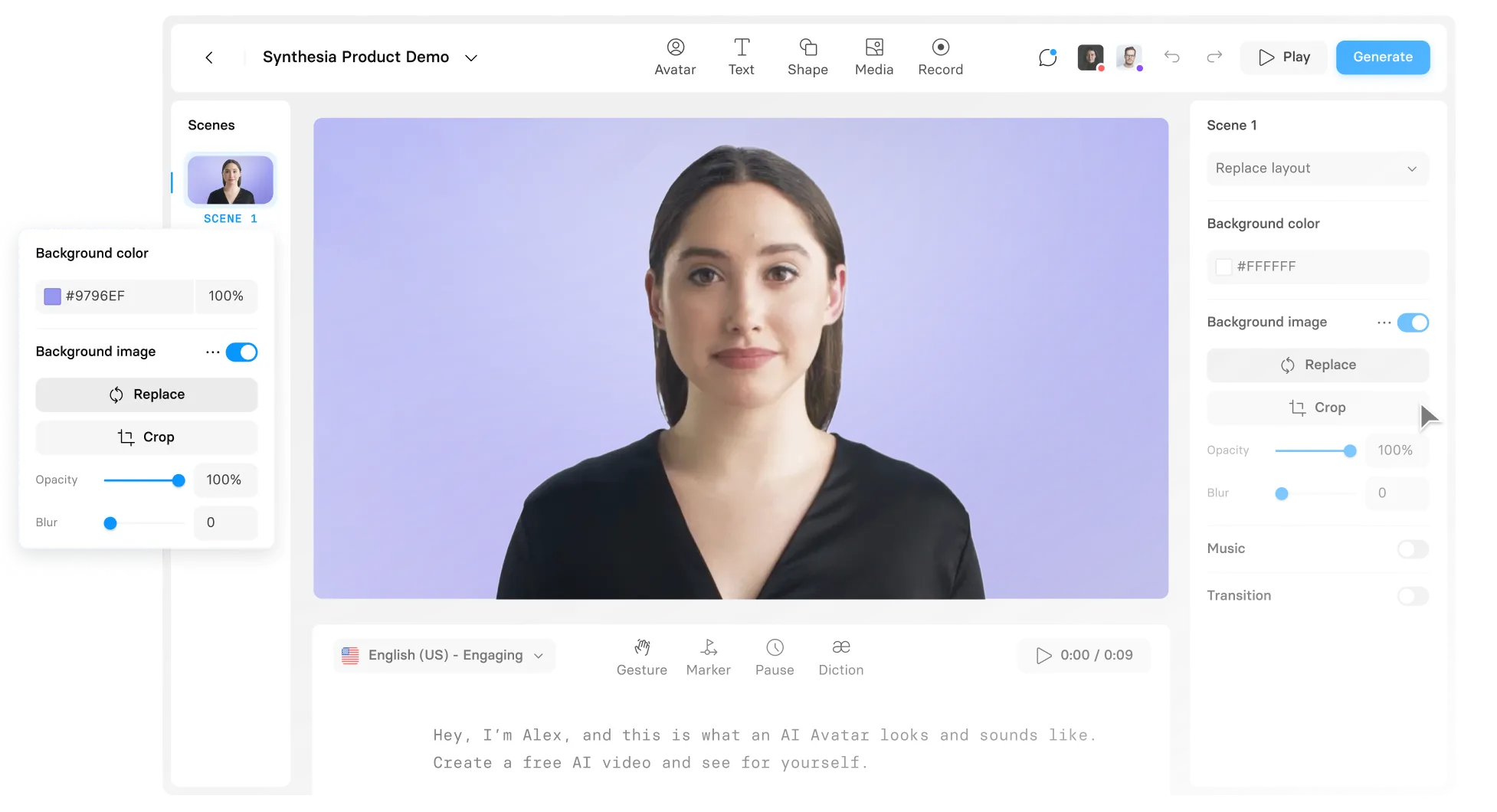Want to make your onboarding video informative and enjoyable to watch?
You need a new employee onboarding video script that:
- Delivers the correct need-to-know information.
- Warmly welcomes your new employee with your company's culture and values.
- Gets new employees nervous after the recruitment process excited and motivated about their new role!
This post breaks the scriptwriting process down into six simple steps. So you can write video scripts that keep new employee engagement at an all-time high.
Why is a good video script important for the onboarding experience?
A good onboarding experience improves a new employee's productivity in their new position.
Research shows new hires must complete, on average, 54 activities during their first few weeks, and a great experience can make them 18x more committed to your company.
You can talk to your new hires about your company all day long. But to ensure they'll grasp and use this information, you must make their first day memorable.
And that's the purpose of orientation videos — to keep the new employee engaged and help them process and facilitate information retention.
If you get these videos right, your new hires will adapt more quickly, get excited about working with you, and be motivated to do their best.
However, getting a new employee up to speed is an extensive process for any business that will require a sequence of videos with engaging video scripts.
Your company may suit a simple format consisting of 4 videos for optimized employee engagement in their first week:
- Welcome video: A warm, personalized welcome video to your new hires showcasing the company's highlights and the schedule of their onboarding process.
- Orientation video: Delve deeper into the company's history and culture, informing the new employees on the internal policies and procedures and core values.
- Getting started: Introduce the new hire to how their day-to-day routine should look like, what tools they'll use, what workflows they'll follow, and the whole team around them.
- Skills training: Create microlearning experiences for new apps or missing skills that were identified during the recruitment process.
Or, if a new position requires a greater amount of training, your company might prefer a more granular process, with even more videos spread out in time. The choice is up to you.
None of the above videos can be effective without well-thought-out video scripts - which is why it's so important to get them right.
Now, let's introduce you to the framework that'll help you write spot-on orientation video scripts that give employees a great first week.
How to write an onboarding video script
Scriptwriting can be a time-consuming and daunting process. Here's how you can approach the video script creation methodically 👇
Step 1. Define the audience and goal of your onboarding video
Start by narrowing down the target audience and goal of the video before you start writing a video script and filming.
What role do you want the onboarding video to play in the onboarding process? Do you simply want to introduce the company culture or give an outline of the first week's schedule, for example?
When thinking about the audience, the first thing that will come to mind is 'new employees.' But it needs to be more targeted than that. Think about which department the onboarding videos are for, who the team members are, and what culture the new employees are from.
Note down all the information that you think is necessary to narrow down the target audience as much as possible.
Step 2. Use an onboarding video script template
Once you've narrowed down the audience and objective, the easiest way to get started with scriptwriting is to use a new employee welcome video script template.
Here's a free video script template you can use:
While this particular template focuses on introducing company policies and values, it can be easily adapted to fit all kinds of onboarding videos.
Using a video script template is definitely not necessary, but it can serve as a helpful guide, especially when you're stuck with writer's block.
Step 3. Write a rough outline
Next, create a rough outline of all the main points you want to include, but don't make it too long. 5-8 sentences is usually enough.
This not only helps you streamline your thoughts, but it also provides a clearer picture of the core message you aim to convey.
By breaking down your content into this condensed format, you gain better insight into the progression of your argument or narrative, ensuring a logical transition from one idea to the next.
Step 4. Plan out the visuals
Next, think about what kinds of visuals you'd like to use to support your video.
Here are just a few visuals you can include in your orientation videos:
- Animation - perfect for story-driven narratives
- Presenters - perfect for narration
- Screen recordings - perfect for instructions
- B-roll or stock footage - perfect for metaphors/broad concepts
- Text on screen - perfect for reinforcing a point
Step 5. Write the script, review and edit
Once you have everything planned out, the only thing remaining is to write the video script. Make sure to include multiple rounds of revision and editing to make the video script perfect.
Step 6. Create the employee onboarding video
Lastly, create the employee onboarding video! If you're creating the video using traditional methods (a.k.a. with video cameras, actors, and microphones), you need to have the video script finalized before you start filming because videos are notoriously hard to update.
However, if you're using an AI video maker like Synthesia, you can simply paste your onboarding script into the tool, and it will automatically generate a video with an AI avatar and AI voiceover for you.
See an example employee onboarding video generated with Synthesia👇
3 tips for creating an excellent new hire video script
1. Use an AI script generator
Writing a unique video script for every video in the employee onboarding process can be tedious, and using a script template can lead to repetitive results.
A more convenient and less time-consuming idea is to use the AI script generator by Synthesia. This is a tool that uses artificial intelligence to generate scripts based on a few text prompts, and allows you to create video content using that script all in the same place.
Simply write down the topic and objective of your video, as well as the tone of voice. Your script will be generated in seconds, and you can edit it further as much as needed.
2. Plan out the voiceover
A lackluster delivery could make even the best script in the world miss the mark among the new employees.
With your orientation script ready, it's time to create the video narration with a clear voice, free of background noise.
The power of voice is crucial for virtual engagement. A voice that varies tone and pacing, emphasizing essential points, creating anticipation, and even some sense of excitement, will influence engagement and performance.
Voice options include hiring a professional actor to read the script, trying to do it yourself with your best acting voice, or experimenting with AI text-to-speech technology.
AI tools are gaining popularity for their speed, ease of use, and flexibility. Plus, AI voice quality can surprisingly compete against one professional actor at a hard-to-beat price.
3. Personalize your videos with unique content
A dry and long orientation video can be painful to sit through and can seriously damped the employee experience.
Don't simply list out all the necessary information in bullet points and expect your new employees to be excited about it.
Take the time to make your employee onboarding experience truly unique and engaging.
For example, insert a fun fact about the business, introduce the company culture and values, tell the story of the company, add photos and welcome videos of team members - the list goes on.
Ready to write scripts for employee onboarding videos?
Now you have all the necessary information and tools to write engaging scripts for employee onboarding videos using a proven and structured process.
However, if you don't have time to write unique scripts for each new employee, why not generate an onboarding script using an AI script generator in 2 minutes?
And if you already have a welcome video script, transform it into video in minutes using this free AI video demo by Synthesia.




.jpeg)





